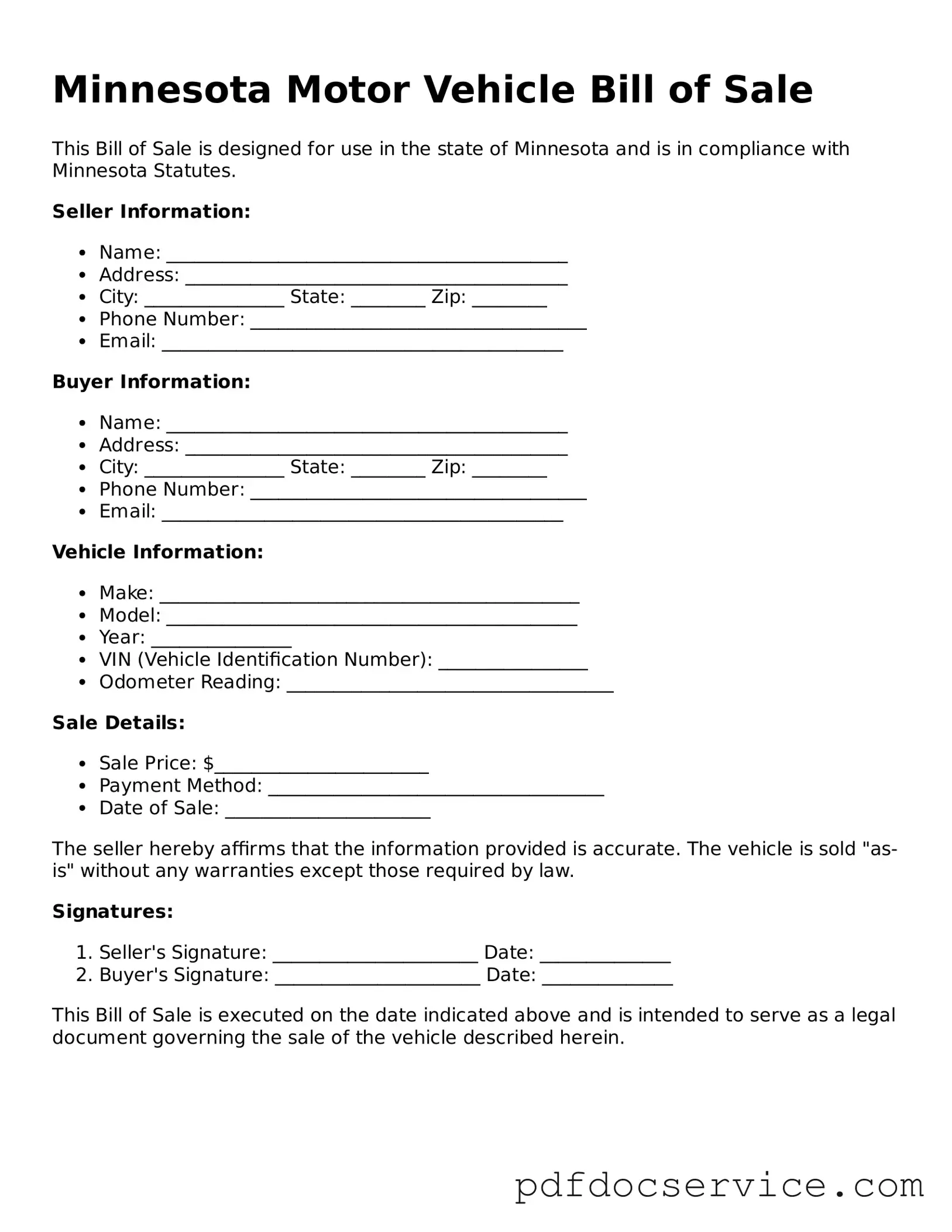What is a Minnesota Motor Vehicle Bill of Sale?
A Minnesota Motor Vehicle Bill of Sale is a legal document that serves as proof of the sale of a vehicle between a buyer and a seller. This form outlines essential details about the transaction, including the vehicle's make, model, year, and Vehicle Identification Number (VIN). It also includes information about the buyer and seller, such as their names and addresses. This document is crucial for both parties, as it protects their rights and provides a record of the transaction.
Why is a Bill of Sale necessary in Minnesota?
In Minnesota, a Bill of Sale is not legally required for every vehicle transaction, but it is highly recommended. This document helps establish ownership and can be used to register the vehicle with the state. Additionally, it provides a safeguard against disputes that may arise regarding the sale. If the buyer needs to prove ownership or if there are any issues with the vehicle after the sale, having a Bill of Sale can be invaluable.
When completing a Minnesota Motor Vehicle Bill of Sale, it is important to include the following information:
-
Seller's Information:
Full name, address, and contact information.
-
Buyer's Information:
Full name, address, and contact information.
-
Vehicle Details:
Make, model, year, VIN, and current mileage.
-
Sale Price:
The agreed-upon price for the vehicle.
-
Date of Sale:
The date the transaction takes place.
Including these details helps ensure that both parties are clear about the terms of the sale and provides a complete record of the transaction.
Do I need to have the Bill of Sale notarized?
In Minnesota, it is not mandatory to have the Bill of Sale notarized. However, having it notarized can add an extra layer of security and authenticity to the document. If either party has concerns about the legitimacy of the transaction, notarization can help mitigate those worries. It is always a good idea to keep a copy of the notarized document for personal records.
You can obtain a Minnesota Motor Vehicle Bill of Sale form from several sources:
-
Online:
Many websites provide free templates that you can fill out and print.
-
Department of Public Safety:
The Minnesota Department of Public Safety may have forms available for download or in person.
-
Local DMV:
Your local Department of Motor Vehicles office can provide the form and assist with any questions you may have.
Always ensure that the form you use is the most current version to comply with Minnesota laws.
